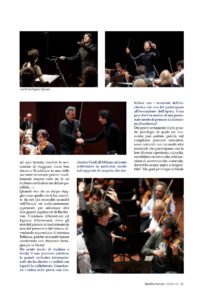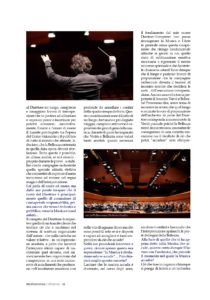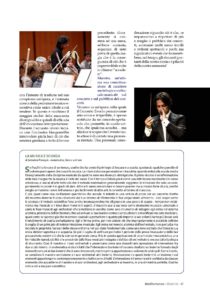Intervista esclusiva al Maestro Antonio Puccio su Mediterraneo e Dintorni: una riflessione sulla Musica Classica, la direzione d’orchestra e l’interpretazione, parlando di pubblico, empatia e comunicazione.
Exclusive interview to Maestro Antonio Puccio on Mediterraneo e Dintorni magazine: a thought on Classical Music, Orchestra Conducting and interpretation, talking about audience, empathy and communication.
La Musica è scienza
Se frughi tra le cose di un tempo, quelle che hai avuto il privilegio di imparare a scuola, spostando qualche granello di polvere puoi sapere che cosa è la musica. La mia è stata una generazione miracolata, quando entrai alla scuola Media l’insegnamento della disciplina musicale da qualche anno era divenuto obbligatorio. Il primo ricordo, è persino banale rammentarlo qui, sono i lunghi capelli neri e le labbra carnose della mia insegnante, di bella e formosa presenza che si mostrò affermando che la musica è l’arte dei suoni. Con il tempo e l’età la presi come una definizione matematica in senso ortodosso, e lasciai all’arte tutto ciò che il metodo matematico generalmente sopprime: l’emozioni che solo un componimento musicale è in grado di dare. Altre arti sanno emozionare e donare piacere ma la musica forse di più, perché meglio armonizza i sensi dell’umano e più facilmente di altre arti, li connette all’anima di ciascuno.
E poi, quasi come una oscillazione quantistica che accade, ti imbatti in una seduta di prove per un concerto diretto dal maestro Antonio Puccio ed osservi dal tuo sistema di riferimento le fasi preparatorie all’evento. Così scopri come la scienza e il metodo scientifico forse anche inconsapevolmente allignano in una specie di spazio – tempo non relativistico ma musicale e li trovi dove meno te li aspetti. Il maestro usa la sua voce come strumento musicale universale e canta le frasi musicali agli orchestrali che si mettono in ascolto. Come uno strumento di indagine egli entra nel sistema atomico, planetario dell’orchestrale, fino ad arrivare al suo nucleo centrale senza alterare o modificare ma solo modulare, quasi come se sapesse già che osservare equivale a perturbare e quanto più impone la sua volontà tanto più basso sarà il rendimento di quella perturbazione. Egli si ferma prima, per non violare ciò che impropriamente è possibile definire la soglia di un principio di indeterminazione musicale. Egli entra nel mondo atomico dell’orchestrale, non perturba ma modula le proprietà nucleari dello stesso e ritorna nel suo stato fondamentale, come uno ione eccitato che libera la sua onda elettromagnetica e si acquieta. Se poi ti capita di verificare per tutto il periodo delle prove l’esecuzione delle fasi preparatorie, osservi ciò che la scienza in generale cerca. Vi è, in questa applicazione di un principio meccanicistico una formidabile riproducibilità che prescinde dalla frase musicale indagata e dal tipo di orchestrale o ancora dalla tipologia di strumento. Così, il maestro e suoi orchestrali si presentano come una straordinaria operazione di intersezione tra due o più insiemi.
In matematica si dice infatti che l’intersezione tra insiemi ha come risultato un insieme formato dagli elementi comuni ai due insiemi che si sono intersecati, mentre prima appartenevano solamente ai singoli. Come è noto, se considero il maestro un insieme e i suoi orchestrali altri insiemi, l’intersezione tra questi insiemi è un insieme, i cui elementi appartengono contemporaneamente a tutti e sono di tutti. L’intersezione è l’armonia ed è costituita da ciascun elemento che appartiene al maestro e ai suoi orchestrali, agli orchestrali e al maestro, in una simmetria perfetta. Così ho visto e ciò a me pare scientifico.
Ho valutato altri orchestrali e maestri e ho appurato che l’intersezione era un insieme vuoto, privo di elementi. Gli orchestrali e il maestro non avevano elementi comuni.
Salvatore Procopio salvatoreprocopio@katamail.com
Music is Science
If you search among the ancient things, those you had the privilege to learn at school, moving some specks of dust you can know what Music means. My generation was very lucky, when I arrived at secondary school, music lessons had become mandatory from some years.
First recollection, almost redundant to be remembered now, were the long black hair and the plump lips of my teacher, with her beautiful and shapely presence, affirming that music is the art of sounds.
When time and age passed, I began to consider that statement like a mathematic definition in orthodox sense, and I leaved to the Art everything that Mathematic couldn’t express: the emotions that only a musical composition can offer. Other arts excite and give delight but Music give us much more, because it blends much better the human senses and connects them to the soul of each of us more easily than others arts.
And then, almost as a quantum oscillation that happens, you come across a rehearsal of Maestro Antonio Puccio and you observe the different stages of a concert preparation from your personal point of view.
So, you discover like the science and the scientific method, probably even un-knowing it, they live in a sort of not relativistic but musical space-time and you can find them where you don’t expect to.
The Conductor uses his voice like a musical universal instrument and he sings the musical phrases to the orchestrals listening with attention.
As an investigative tool, Conductor comes into the atomic-planetary system of the orchestral, until getting to the core without altering or modifying it but only modulating, almost as if he already knew that observing is equal as to perturbing and the more he imposes his willingness, the lower will be the result of that perturbation. He stops before, so not to violate what is improperly defined the threshold of a principle of musical indeterminacy. He enters into the atomic world of the orchestral, he doesn’t disturb but modulates its nuclear properties and returns to its fundamental state, like an excited ion that frees its own electromagnetic wave and becomes still.
If then you have the chance to check the preparatory phases for the whole period of rehearsals, you can observe what science generally looks for.
Applying this mechanistic principle, there is a formidable reproducibility that prescinds from the investigated musical phrase and from the kind of orchestra or again from the used musical instrument. In this way the Conductor and his orchestra present themselves as one extraordinary operation of intersection between two or more groups.
In mathematics the intersection between groups results in a set formed by the elements common to the two intersected groups, whereas before they belonged only to the single ones.
As you know, if I consider the Conductor as a set and his orchestrals as other sets, the intersection of these sets is a whole, which elements belong to everyone and they are everyone’s.
Intersection is harmony and it’s consisting from each element belonging to the conductor and his orchestrals, to the orchestrals and to their conductor, in a perfect symmetry.
That’s what I saw and this seems to be scientific to me.
I evaluated other orchestras and conductors and I found that the intersection was an empty set, poor of elements. The orchestrals and the Conductor didn’t share common elements.
Salvatore Procopio salvatoreprocopio@katamail.com







